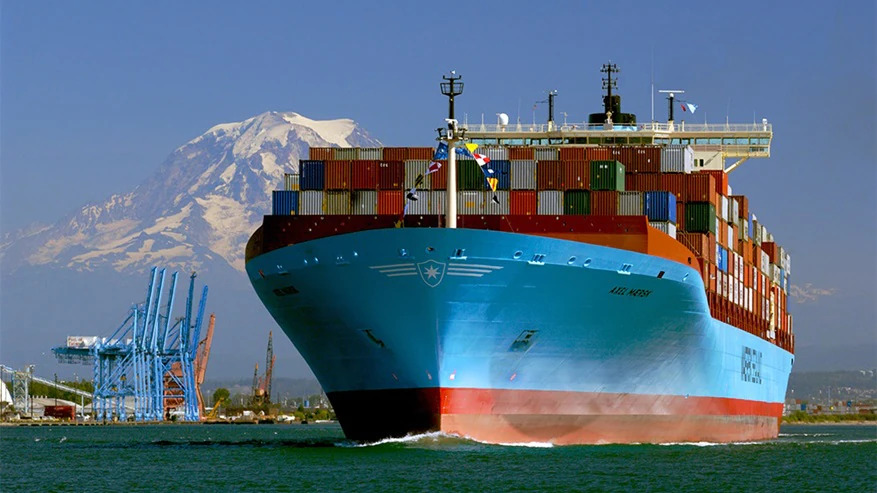A.P. Møller – Maersk has reported an exceptional start to the year.
The company reported strong earnings and growth momentum across all its businesses in ocean, port services and logistics.
The company said it benefitted from strong demand in a market still influenced by the pandemic and significant disruptions in global supply chains.
Strong demand coupled with significant operational challenges such as bottlenecks, lack of capacity and equipment shortage in global supply chains drove freight rates up significantly.
A.P. Møller – Maersk CEO Søren Skou said the company delivered an exceptionally strong performance in the first quarter, driving record profit for Q1.
“The high growth and profitability were driven by solid demand across ocean, logistics and terminals. Strong demand led to bottlenecks and a lack of capacity and equipment, which drove up freight rates to record-high levels,” he said.
“We remain focused on the long-term transformation of A.P. Moller – Maersk, prioritising customers’ demand for integrated logistics. Our integrator strategy was validated by strong customer support during Q1. As we change the conversations with customers from being short-term transactional to becoming long-term value-based, we lay the foundation for further, stable growth.”
The numbers
Overall, in Q1, EBITDA increased to US$4 billion from US$1.5 billion year on year and EBIT to US$3.1 billion from US$552m compared to same quarter last year, while revenue improved by 30% to US$12.4 billion.
The results reflect the high volumes, which are up 5.7%, significant increases in freight rates of 35% and lower bunker fuel prices, leading to an EBITDA in Ocean of US$3.4 billion compared to US$1.2 billion in Q1 2020, and an increase in revenue to US$9.5 billion from US$7.2 billion.
The businesses
Logistics and services continued with strong growth momentum and revenue increase of 42% in Q1 to US$2 billion, mainly driven by organic growth, but also with growth from the acquisitions of Performance Team and KGH Customs Services. EBITDA increased by 201% to US$205m compared to US$68m, and EBIT increased to US$139m compared to US$29m same quarter last year, partly driven by margin expansion.
Also, Gateway Terminals had a strong Q1 performance, with revenue increasing by 24% to US$915m from US$740m led by higher volumes and storage income, while EBITDA increased by 52% to US$323m from US$213m.
A tough time
The results came in a persistently difficult environment where countries are still contending with the effects of the pandemic.
“We have continued to dedicate significant efforts to the safety of our employees and contribute to the societies we operate in, this quarter with a particular emphasis on India,” Mr Skou said.
“Overall, we can be very satisfied with how the business performed this quarter. High profitability led to a ROIC of 15.7%, and our strong free cash flow gives us the opportunity to invest further in the transformation of the business, while accelerating the remaining part of the ongoing share buy-back programme and subsequently launch a new, additional share buy-back programme of approx. US$5 billion over the coming two years.”
Guidance revised up
Given the result in Q1 2021 and the company’s expectation that the exceptional market situation will continue well into the fourth quarter of 2021, the full-year guidance has been revised upwards on 26 April 2021 to:
- Underlying EBITDA in the range of US$13.0-15.0 billion (previously US$8.5-10.5 billion) compared to US$8.3 billion in 2020
- Underlying EBIT in the range of US$9.0-11.0 billion (previously US$4.3-6.3 billion) compared to US$4.2 billion in 2020
- Free cash flow of minimum US$7.0 billion (previously above US$3.5 billion) compared to US$4.6 billion in 2020.
As part of the full-year guidance for 2021, A.P. Moller – Maersk now expects the current exceptional situation, with the demand surge leading to bottlenecks in the supply chain and equipment shortage, to continue well into the fourth quarter of 2021 versus previously expected to continue in Q1 and normalise thereafter. As expected, profitability in Q1 2021 was above Q4 2020.
Ocean is still expected to grow in line with global container demand, which is now expected to grow by 5-7% in 2021 (previously 3-5% in 2021), primarily driven by the export volumes out of China to the US, with the highest growth seen in the first half-year.
For the years 2021-2022, the accumulated CAPEX is now expected to be around US$7 billion (previously US$4.5-5.5 billion).

